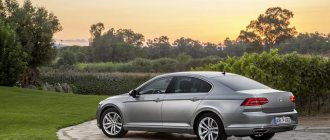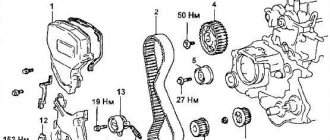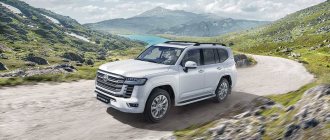The history of the confrontation between Japanese automobile giants Honda and Toyota goes back more than 80 years. This is comparable to the rivalry between Mercedes and BMW or Ford against General Motors, which already says a lot. For the Japanese, these two brands are iconic brands that have managed to conquer the world. According to statistics, now in the most competitive world market - the USA - every ninth car out of 15 coming off the assembly line belongs to the Japanese concerns Honda and Toyota. But which car is better - Honda or Toyota?
A little about cars in general
Honda
This automaker cannot boast of a long history, although it dates back more than 80 years. In addition to cars, the production produces very popular motorcycles, airplanes, and developments are underway in the field of robotics.
The cars have a multi-link suspension, almost eternal. Any model of car can be made in any configuration and equipped with a motor according to capabilities, finances and wishes. The cars look prestigious and, in fact, are so.
This brand is best known for its “sports orientation”. Actually, these are cars that are not essentially racing cars, but they have the best engine in their class compared to others, hence the passion to drive them. The engine capacity does not exceed 2 liters, but due to special engineering developments, the machine’s power increases significantly.
The disadvantages are the excessive cost of maintenance and the “sophistication” of the electronic brains, which complicates repairs. Weakness of depreciation is also noted - uneven roads are felt more strongly on the Honda.
Toyota
A well-known Japanese automaker that has been on the market 20 years longer than Honda. Since 2012, it has firmly maintained its leading position as the world's largest automaker. During 2012-2015, it was listed as the most expensive automobile brand.
They produce trucks, passenger cars and buses. On the territory of Russia since 2005 near St. Petersburg in the village. Shushary has built a plant where machines are assembled for use in the Russian Federation.
The brand is famous for its conservatism, preferring to produce cars that do not differ in configuration and quality at different factories in different countries.
Reliability comes first, and design delights fade into the background. In its own way, this is the Japanese analogue of the Zhiguli, when with a minimum of frills, a small choice between a diesel and a gasoline engine, accessible and inexpensive service with cheap components and spare parts is offered.
At the same time, the Toyota line allows you to choose a car for a long time and with taste - the model range is very wide. Here you can choose a small car and a truck, a convertible and a sedan, a cheap and an expensive car, equipped with a gasoline, diesel or hybrid engine.
Auto parts are easy to find, but they are often made in Chinese factories, and their quality is appropriate. You need to look for original Japanese parts.
External parameters
Toyota is equipped with powerful features that make the word “business” come to mind. Let's look at some factors that indicate the overall design:
- wide hood;
- large body dimensions;
- soft optical elements;
- massive profile;
- powerful bumper.
The car has a fully expressed design idea and surprises everyone with its beauty.
Honda, in comparison with the previous car, expressing “business”, shows a sporty character:
- rapid pressure;
- wide hood;
- large lattice parameters;
- straightness and severity of lines;
- narrowed optics.
What is better in this direction, each driver decides for himself.
For the objectivity of the picture, it is necessary to make a comparison within the framework of other characteristics.
Common features between Honda and Toyota
Honda and Toyota are two Japanese automakers that place the reliability of their products at the forefront.
The cars are quite “smooth” in operation, each has its own subtleties, but in general both brands are distinguished by their durability and practicality in use. They last a long time and age gracefully without becoming a pile of junk on wheels.
Any Japanese product is approximately the same in quality. In the model range, each has its own successes and shortcomings. Thus, Toyota C-series naturally aspirated engines (diesel) are almost problem-free, but the same turbocharged 2C-T engine often malfunctions.
If we talk about the smoothness of the ride and the design features of the suspension, we shouldn’t discount the difference in handling. The Honda has the handling of a sports car and its default suspension should feel firmer, while the Toyota is more of a sedate car that rides smoother and softer.
These are not advantages or disadvantages, this is the difference in the purchasing needs of drivers who value different speed limits, have different driving styles and purchase cars for different purposes. Interior trim in general for the Japanese automobile industry in the same class of cars is similar in quality. Therefore, it is better to compare specific models of one segment rather than all cars from one manufacturer en masse.
Exterior design
We achieved this result by using aluminum in the alloy. The latest generation has noticeably grown in length by mm. 10mm wide and 25mm high. Even the basic configuration includes climate control and parking sensors. Collision warning signal.
CAMR+ACCOR 427
Limit of options, no freedom of choice. The heated mirrors are terrible - the Europeans have no competition.
Comfortable, large, more or less modern, reliable engine. Weak paint and varnish coating, lack of a DVD player, navigation system not very easy to use. See more opinions of Honda Accord, all generations Aggressive design.
Excellent dynamics, partly thanks to the fast box. Amazing maneuverability and controllability.
The interiors of both cars evoke positive emotions. Camry is a little conservative in the design of the center console, but the latter looks “rich” due to its large size and the abundance of keys on it. The Accord offers a more modern front panel, which houses two screens: one for the functions of the multimedia system, and the second for navigation and a rearview camera. If we compare the instrument panel, the Camry is definitely preferable - its optitron “instrumentation” is much more impressive due to the blue backlight and chrome trim. Honda's "saucers" are perfectly legible at any time of the day, but they look rather rustic.
But in the Accord, the driver is unlikely to complain about the profile and lateral support of the seat - the body is fixed tightly. The Camry's side support bolsters are widely spaced, and the chair itself is flat. As a result, you fall out of it when turning.
The back row of both cars is quite comfortable. There is enough room for both shoulders and knees. However, the Camry has a trump card over the Accord in the form of a control unit in the rear folding armrest. Thanks to it, you can control the air conditioning system, heating the sofa and the angle of its backrest. In a Honda, you can only play around with the blower deflectors. The trunk of both the Camry and the Accord is large - 483 and 495 liters, respectively. The loading docks are convenient, but there is a common drawback - a narrow opening.
We switched coffee shops the same week we tested the Honda Accord EX and Toyota Camry LE. The new coffee shop serves double ristretto espresso for the same price, and I swear the milk foam is thicker and more flavorful.
In fact, we support two coffee chains that offer roughly the same variety. It's the same situation with Honda and Toyota, who are trying to sell me, you, your dad, your boss's niece and 300,000 other people about the same family sedans at the same price.
But just like a regular latte, it's the details that matter when it comes to choosing a midsize sedan. Such subtleties, which the average buyer may not notice, play a decisive role for the expert who uses the machine every day.
Honda changed a thousand small parts for the 2013 Accord, and in our full test we found that the changes were for the better. But we already have a new Toyota Camry and we love driving it to work. And despite our suspicions that these family sedans are one and the same, we cannot say for sure without the results of a comparative test.
So you want to spend $25,000
The average midsize sedan buyer typically plans to spend around $25,000 (before taxes) on the purchase. Such a framework implies a 4-cylinder engine rather than a V6, and a certain self-control when choosing a configuration.
Our Honda Accord EX's only optional extra is the CVT, which costs $800, so the cost including delivery to your dealership is $26,195.
That's $320 more than the 2012 Accord EX in our previous comparison test ($25,875), but it comes with more amenities. Finally, you can make calls without additionally purchased headsets or other hands-free devices, start the engine even without a key fob (yes, now there is a keyless engine start here too). We wouldn't mind a rearview camera (even given the Accord's good visibility), or one on the passenger side mirror to help keep an eye on your blind spot.
Looking for a 2012 Toyota Camry (the 2013 model has not yet been released) that would match the 2013 Accord EX's configuration turned out to be a rather pointless exercise. Actually, such a car exists - it would be an SE with the Convenience package, a sunroof, a power driver's seat and floor mats, with a theoretical cost of $26,755. Toyota did not have such a car in stock, and our own Camry SE with navigation is too expensive ( $28,658). As a result, we opted for the Camry LE with power driver's seat ($440), priced at $23,925 as tested. You could have added a sunroof ($915) and 17-inch alloy wheels ($799), but it didn't work out.
Comparing class C: Honda Civic or Toyota Corolla
These two “Japanese” sedans are very economical, reliable, well equipped, and relatively inexpensive. However, there are differences between them. Both run on gasoline, are equipped with a five-speed automatic transmission, and front-wheel drive.
The engine for the Civic is 140 hp, fuel consumption is 6.5 liters per 100 km. For Corolla, the engine is designed to produce 132 hp, fuel consumption is 9 liters.
Differences:
- The Civic's strongest part is its chassis. The engine is reliable and time-tested, without ultra-modern bells and whistles. Despite the slightly larger “horsepower” volume, it consumes significantly less fuel.
- The Corolla has a good engine and chassis, is easy to maintain, but has problems with the paintwork.
- Civic, unlike Corolla, can only run on clean, high-quality gasoline. Any impurities sharply reduce engine performance.
- The Corolla has a taller body, while the Civic has a longer body.
- The Corolla's ground clearance is slightly higher, but the Civic's trunk is larger.
- According to reviews from “civic owners”, the car is of higher quality, reliable and presentable. “Korol owners” note the low cost of repairs.
- With the same external technical parameters, Civic is cheaper.
- Corolla provides greater comfort when driving long distances.
Comparing Class D: Toyota Camry and Honda Accord
Both business class cars are designed for relaxed driving by calm people who value simple controls, a spacious interior, predictable behavior of the car on the road and reliability. They are popular and widespread in all countries.
We are considering models with four-cylinder gasoline engines:
Camry
has a 2.5-liter engine with a power of 181 hp, an automatic transmission with a 6-speed transmission; Fuel consumption in “city” mode is 11 liters per 100 km, in “highway” mode – 5.9 liters.
Accord
equipped with a 2.4 liter engine with a power of 180 hp, with a CME variator; Fuel consumption in “city” mode is 11.7 liters per 100 km, in “highway” mode – 6.2 liters.
Difference:
- Camry loses to Accord in appearance, it is more simple.
- The Accord consumes a little more fuel according to the “official version”, but during test drives on the track the Camry consumed more than its “opponent”.
- The Accord's new CVT is quiet, confident, and the best on the market today.
- Camry can switch to a “manual” mode of driving the car, allowing the driver to determine the dynamics of the movement.
- On straight sections of the highway, the Accord's dynamics are better and the speed picks up faster.
- The Camry's interior looks more stylish and has better quality finishes. But the Accord interface is a little more convenient.
- The front seats in the Accord are more comfortable, and there is more space in the back for the same interior size.
Conclusion:
Both cars are equally interesting and comfortable, even when traveling long distances. But despite the simpler appearance, the driver feels a little better in the Camry.
Savings on passengers
The first thing worth noting about the RAV4 car is that it will be extremely inconvenient for a fairly tall person to climb into the cabin. Despite this, it will be quite easy to sit down. It is also always possible to adjust the backrest of the chair to suit your parameters, as well as get some space in the knee area. On the back of the car, it is possible to easily accommodate three people. This car really looks rough not only from the outside but also from the inside. Despite this, sitting in the cabin is quite comfortable. However, during sharp turns, the seats do not hold as well.
As for the CRV, it is much more spacious and wider than its direct competitor. In all places, the car looks much more spacious. Even if three of you sit on the last row, there will be quite a lot of free space. In this regard, Honda looks like a clear leader.
The main advantage of the RAV4 could be convenience for rear passengers. However, the armrest, which is located closer to the passengers, does not have any additional features for the rear row. There is not even a simple compartment for small items, not to mention an outlet or deflectors for the ventilation system.
Generally speaking, both cars in this case receive the same number of points. After all, both the first and the second car have their advantages and disadvantages.
Comparing Toyota RAV4 and Honda CR-V crossovers
Both cars are kind of “stars” of the crossover class, with many fans. The appearance of the cars is interesting. The 2016 RAV4 restyling gave the car some memorable features. The new CR-V model also boasts a successful update - the car’s appearance has become more brutal and modern.
RAV4
equipped with a 2.5 liter engine producing 180 hp. with 6-speed transmission. Fuel consumption averages 12 liters per 100 km.
CR-V
equipped with a 2.4-liter engine producing 180 hp, with a five-speed automatic transmission. Fuel consumption sometimes reaches 15 liters per 100 km.
Difference:
- The appearance of the RAV4 is inferior to the more modern CR-V, which has many small but striking elements introduced into its design.
- The RAV4 is equipped with three types of engines (petrol 2 and 2.5 liters, equipped with a choice of CVT or 6-speed manual, vehicle versions - front-wheel drive or all-wheel drive; diesel 2.2 liters with a 6-speed automatic transmission with a 4x4 formula). The CR-V offers 2 and 2.4 liter engines with a CVT and all-wheel drive.
- The ground clearance of the CR-V (208 mm) is greater than that of the RAV4 (190 mm), but the sharp, sporty dynamics of the Honda have diminished, while the Toyota still has a “soft” suspension when driving.
- The trunk volume of the RAV4 is fifty liters more.
- In the CR-V, the rear seats fold automatically when you press a handle in the cabin, but in the normal version it can be a little tight for three people in the back seat.
- The ergonomics of the RAV4 are not bad in general, the car is comfortable and cozy, the lateral support of the seats is especially pleasant, but in the CR-V the interior is a little more elegant.
- Rear seat passengers in the CR-V are more comfortable, as there is 60 cm more space.
- The RAV4 has a very competent all-round viewing system with information transmitted to the screen from four cameras, including the front wheels. To this luxury we would add the cleaning of the anterior chamber, which gets dirty after a couple of minutes - and there would be no price for this “feature”. The CR-V has only one camera, broadcasting the road behind the car.
- Even the top version of the CR-V is clearly inferior to the average RAV4 in terms of adapting cruise control, stabilization and hold systems, and monitoring blind spots.
- With equal engine size and power, the price difference reaches half a million in favor of the CR-V.
What else could please you?
As for a car from Toyota, it is possible to open the luggage compartment by pressing one button. It's comfortable? Undoubtedly! However, for everything to be so easy and simple, you need to pay a little more money and fork out for the Elegance package. As for the list of options, like most Japanese cars, they simply don’t exist.
If we talk about the trunk doors from Honda, then you will have to open them manually. However, in this case, it is not necessary to lift packages of food, as well as other loads, as high as with the RAV4. In addition, there is a much more spacious luggage compartment. Even more interesting is the fact that this car can turn into a cargo-passenger type of van. Folding the sofa located in the back row will not be difficult; all you need to do is pull the handle.
In a Toyota car, things are a little different. In order to turn the car interior into a luggage compartment, you will need to open the doorway and pull the handle. After this, you need to do all these manipulations on the other side of the car. In order to return everything to its original position, you need to do this entire procedure again. Despite the fact that Toyota has a much more convenient luggage compartment, for transporting large loads, it is best to use the second version of the car.
Comparing Toyota Prius and Honda Civic Hybrids
The hybrid versions of the Prius and Civic are very different from each other. In general, they have gasoline engines, hybrid drives, chassis and electrics - everything is reliable. On both cars, high-voltage batteries last a long time if the car is driven frequently.
- In terms of design, the Civic is much closer to conventional cars. If you look under the hood of the Prius, it will immediately become clear that nothing is clear, while the engine compartment of the Civic is almost the same, with the difference being the presence of orange-braided wires.
- The operation of these machines also looks different. The Prius can drive for several kilometers on an electric motor, and the traditional engine can either assist the electric motor or charge the traction battery. The Civic moves with the help of a gasoline engine, and its electric “brother” can help a little and also act as a generator and charge the battery. If you turn off the electric motor, the Civic will run rough, but the Prius simply won't start.
- In the operation of the Prius, the coordination of actions between the electric and gasoline engines that transmit torque to the wheels is quite important. For the Civic Hybrid, they invented a V-belt variator, which is good, but wears out very quickly. The oil must be changed frequently, without waiting for the required 20,000 km.
The Toyota hybrid is by far the better option, no choice. In addition, the Civic Hybrid eats a lot of gasoline.
Conclusion
Choosing a car is not an easy task. Consider your needs, driving style, and financial capabilities. Then go for a test ride, which will help you make the right decision!
Video Toyota vs Honda:
The products of Japanese automakers Honda and Toyota are the most popular among car enthusiasts around the world. Toyota has been a leader in the automotive market for more than 80 years fiftieth anniversary in 2021 .
Cars under the Toyota brand are world leaders in sales volume. The total number of owners of various cars produced at the company's factories was more than 250 million people . The Honda automobile concern, one of the top ten global manufacturers of passenger vehicles, currently has 119 automobile enterprises in 33 countries, which as of 2021 have produced over one hundred million vehicles.
Honda cars
The first production vehicle was the T360 . Practical and reliable, it was extremely popular among Japanese farmers, builders and fishermen. The model line of cars produced by the company currently includes station wagons, minivans, crossovers, as well as sports models.
The Honda CR-V crossover features:
- High cross-country ability.
- Low fuel consumption.
- Roomy interior and spacious trunk.
Honda Civic subcompact , which began production in 1973, now offers a variety of family car models, economical and affordable, as well as sports models. The subcompact hatchback Honda Jazz , more like a miniature minivan, has been produced since 2001. The car, equipped with a 1.3-liter engine, reaches speeds of up to 190 km/h, and gasoline consumption is 5 liters per 100 km.
Toyota brand models
The company, which celebrated its 80th anniversary in 2021, has produced 134 car models of different classes . The company prefers to produce successful brand models for a long time, constantly updating them.
For example, the Land Cruiser , whose production history began in 1953, continues to be produced to this day, occupying a leading position in the consumer market. Toyota Crown model has been in mass production since 1955 and is now in its 14th generation. Modifications of the Corolla sedan confidently hold first place in the ranking of the best-selling cars around the world. Over the 51 years of production of models under this brand, about 40 million copies have been sold. The Hilux pickup SUV celebrated its half-century anniversary last year and continues to be in great demand among consumers. Camry sedan is the undoubted leader among cars in its class.
In 1989, mass production of the luxurious Lexus LS 400 , which seriously competed with the best premium vehicles. The Toyota Ray 4, the ancestor of extremely popular crossovers, has not lost its appeal in our time. For fans of inexpensive sports cars, the MR 2 model was the ideal choice, and the sports model GT 86, released in 2012, received a large number of first places in various categories. Toyota Highlander , with three rows of seats, is one of the best mid-size car models. For Russia, the average cost of such a car starts from three and a half million rubles.
What the models from both companies have in common
Honda and Toyota are distinguished by having a wide range of models that can satisfy the needs of different categories of consumers. Both companies have a reputation for producing super-reliable and high-quality cars, managing to provide the best value for money in the world.
Cars of the same class have the same high quality interior trim. Crossovers of Japanese companies have a brutal, modern appearance and a memorable appearance. In terms of fuel consumption, the engines used for equipment have practically no significant differences. Vehicles belonging to the business class have simple controls, a spacious interior, are reliable and predictable behavior on the roads.
Who gives preference to Toyota or Honda and why?
Honda Civic is chosen by lovers of powerful, fast, maneuverable cars that do not require large expenses for purchase and further maintenance. For those who are not strapped for money and value comfort and status, the best choice would be the Toyota Corolla. When choosing a business class car, many people prefer the Toyota Camry as a model that is more comfortable for the driver, although it looks simpler in appearance than the Honda Accord. Toyota RAV 4 and Honda CR-V are “stars” in the crossover class, but while winning in terms of appearance and elegance of the interior, the CR-V loses to the RAV4, being 500 thousand rubles more expensive. In addition, in terms of adaptation of cruise control, stabilization and hold systems, and blind spot monitoring, even the average RAV4 is cooler than the top version of the CR-V.
Cars of Japanese brands are very similar in terms of quality, reliability and are in equally high demand . When choosing a brand, you take into account driving style, financial capabilities and how expensive it is to maintain a car, comparing models of the same class. A comparison of the hybrid models of both Japanese brands clearly shows the advantage of the Toyota automaker.
Auto and motorcycleComment
Distinctive features of car brands
The multi-link suspension design, present in all Honda cars, is practically indestructible and can be considered eternal. All models produced under the Honda brand are equipped with the best engines in the world, which makes them symbols of Japanese reliability. Special engineering developments significantly increase the power of engines whose volume does not exceed two liters. As a result, although passenger vehicles produced under the Honda brand are not racing vehicles, they have a very highly developed sporting orientation.
At the same time, the desire to saturate vehicles with the Honda nameplate to the maximum with electronic assistants leads to an increase in the cost of maintenance and the need for repair work at specialized service stations. Manufactured cars, due to weak depreciation in the cabin, feel bumps on the roads more strongly than Toyota cars.










